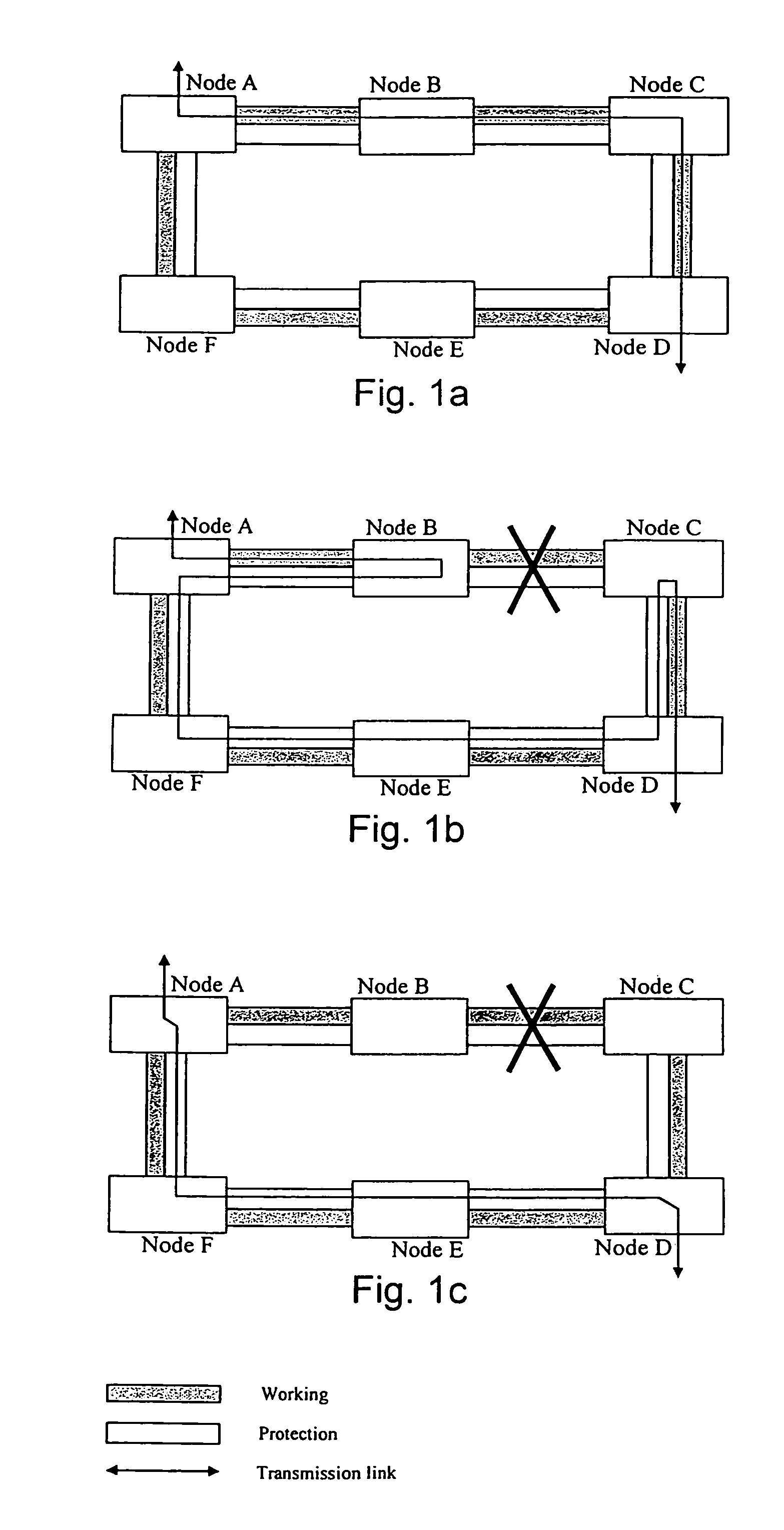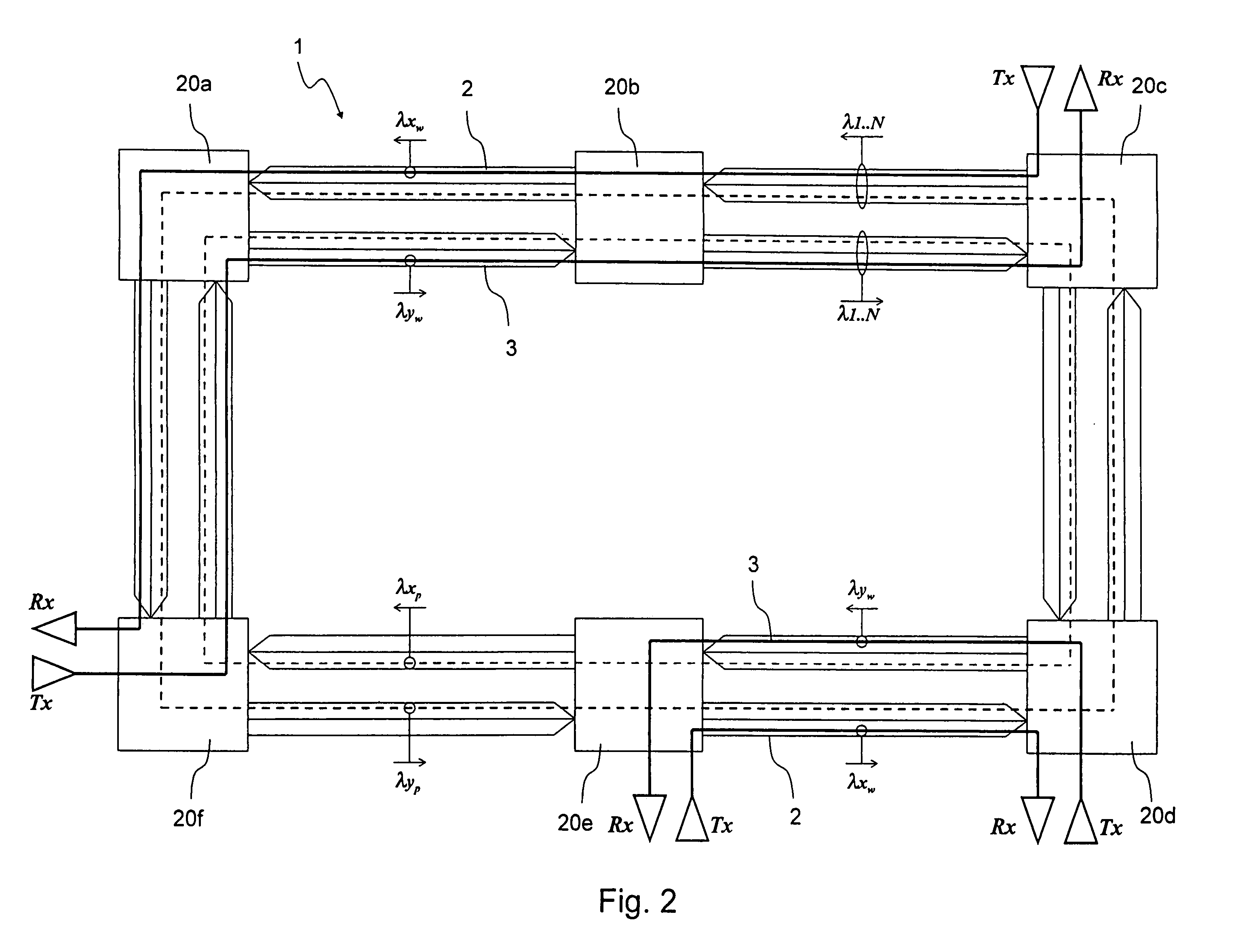Autoprotected optical communication ring network
a technology of optical communication ring network and autoprotection, which is applied in the field of optical communication system, can solve the problems of not being able to protect more than n channels, not being able to have different protection mechanisms, and being unable to protect the other working channels temporarily, so as to avoid sudden power variations inside the network
- Summary
- Abstract
- Description
- Claims
- Application Information
AI Technical Summary
Benefits of technology
Problems solved by technology
Method used
Image
Examples
Embodiment Construction
[0059]Schematically shown in FIG. 2 is an optical communication ring network 1 according to an embodiment of the present invention. Network 1 includes a first and a second optical fiber ring 2, 3 defining respective optical carriers that have opposite transmission directions. The network 1 also includes a plurality of nodes 20a–20f, which are positioned along the first and the second ring 2, 3, for adding and dropping optical signals. Network 1 is adapted for both terrestrial transmissions and transoceanic transmissions. For long-haul transmissions, in particular, transoceanic transmissions, network 1 is preferably provided with line optical amplifiers and / or boosters and / or preamplifiers (not shown).
[0060]In FIG. 2, rings 2, 3 define an external ring having a counter-clockwise transmission direction and an internal ring with a clockwise transmission direction, respectively. The number of nodes in network 1, by way of example, is six; however, the present invention has applicability...
PUM
 Login to View More
Login to View More Abstract
Description
Claims
Application Information
 Login to View More
Login to View More - R&D
- Intellectual Property
- Life Sciences
- Materials
- Tech Scout
- Unparalleled Data Quality
- Higher Quality Content
- 60% Fewer Hallucinations
Browse by: Latest US Patents, China's latest patents, Technical Efficacy Thesaurus, Application Domain, Technology Topic, Popular Technical Reports.
© 2025 PatSnap. All rights reserved.Legal|Privacy policy|Modern Slavery Act Transparency Statement|Sitemap|About US| Contact US: help@patsnap.com



